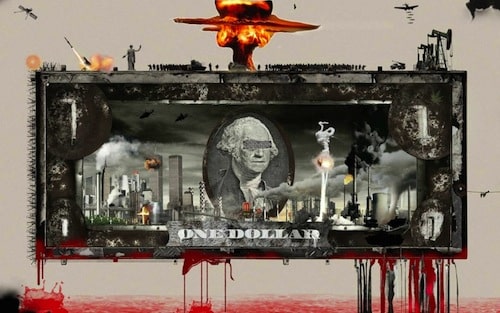
All of a sudden everyone is an expert on inflation. Your brother-in-law, your local paper, and even dilettantes at dubious outlets like the Washington Post or The Atlantic feel compelled to explain our current predicament. With the admitted rate of consumer inflation running somewhere around 8 percent, and the real rate much higher, even central bankers can’t hide the reality from us. So the commentariat has to explain to us why this is happening and make sure we blame the mysterious workings of capitalism for our troubles.
In other words, economics is back. Covid was a nice diversion, and Ukraine took up all the media’s oxygen for a few months. But now we must deal with the economic devastation caused both by lockdowns and two years of crazed fiscal and monetary policy. Everyday Americans, stubborn as they are, care more about rising gas and food prices than the political class would like. So they trot out Nancy Pelosi to explain how government spending actually reduces inflation and push pseudoeconomic ideas like modern monetary theory to explain why more federal spending is always the cure.
But what is really happening?
First, consider the two covid stimulus bills passed by Congress in 2020 and 2021. These pumped more than $5 trillion directly into the economy in the form of payments to government, payments to households, unemployment benefits, employer payroll loans, cash subsides to airlines and countless other industries, and a host of grab-bag earmarks which had nothing to do with covid. This new money injected itself straight into the veins of the daily economy.
Second, supply chains remain degraded because politicians around the world didn’t think through their lockdown policies. The deeply interconnected global economy does not have an ON/OFF switch. Idle resources and idle workers don’t simply spring to life and produce goods and services on command. But our policy makers have no conception of a structure of production, its temporal elements, or the ravages of malinvestment created by their political decision to shutter businesses.
Third, covid allowed the Fed to justify yet another spasm of “extraordinary” monetary policies beginning in March 2020. This gave central bankers an easy out, in a sense, because real trouble was already on the horizon back in September 2019. The repo market, which commercial banks use for short-term (overnight) financing of their operations, suddenly seized up and sent rates spiking. These paroxysms embarrassingly forced the Fed to inject billions of dollars into its “standing” (i.e., permanent) repurchase facility and to consider yet another round of QE (asset buying) even after it had promised to shrink its balance sheet, still bloated with the detritus of the 2007 crisis.
All of this happened before any of us had heard of covid. But the obvious question last fall, screaming to be asked, was this: How on earth, after more than a decade of aggressive asset purchases by the Fed (swelling the central bank’s balance sheet from less than $1 trillion in 2007 to more than $4 trillion by 2019), did commercial banks still experience a liquidity crunch? What the hell was the point of all that money?
But covid washed away any question about repo and silenced any critics of the Fed’s largesse. Covid had to be defeated, by God, and monetary policy would lead the way. So the Fed went into hyperdrive, buying trillions in additional assets to send its balance sheet soaring to nearly $9 trillion today—adding nearly 20 percent of all dollars ever created to the M2 money supply measure in 2020 alone.
That same year, with lockdowns firmly in place and a crisis mindset whipped up by both parties, Congress managed to spend almost twice what the Treasury collected in taxes ($3.4 trillion in revenue versus $6.5 trillion in outlays). How is such an arrangement possible? Given historically low rates of return on Treasury debt—well below real inflation—and given the almost unbelievable and irreversible profligacy of the spendthrift US government, why would any sentient being continue to loan money to Uncle Sam? Why would anyone help Congress continue its debt-financed orgy? Why lend America money?
The answer is complex, ranging from the dollar’s status as the world’s reserve currency to pension and sovereign wealth funds around the globe that hold US Treasurys by charter and even the relative strength of America’s military forces. The question is thus as much geopolitical as economic. But in short, the world knows the Fed will always be there as a ready backstop, to buy US debt when appetites for such debt waver. Propping up congressional deficit spending, juicing equity markets, and constantly recapitalizing commercial banks are the Fed’s true mandates.
How does inflation end? Only with pain in the form of a necessary corrective recession or depression. Congress must slash spending, the Fed must stop buying assets and stop tampering with interest rates, and existing US debt must be allowed to mature and roll off the Fed’s balance sheet. We should force the US federal government to sell assets, especially land, to pay off Treasury obligations and fund future Social Security and Medicare entitlements. And if necessary, the federal government should be forced to default or apply a haircut to Treasury investors, who, after all, took a risk like any investor.
If all of this sounds politically impossible, you understand the deep unseriousness of today’s politics.
Reprinted with permission from Mises.org.

